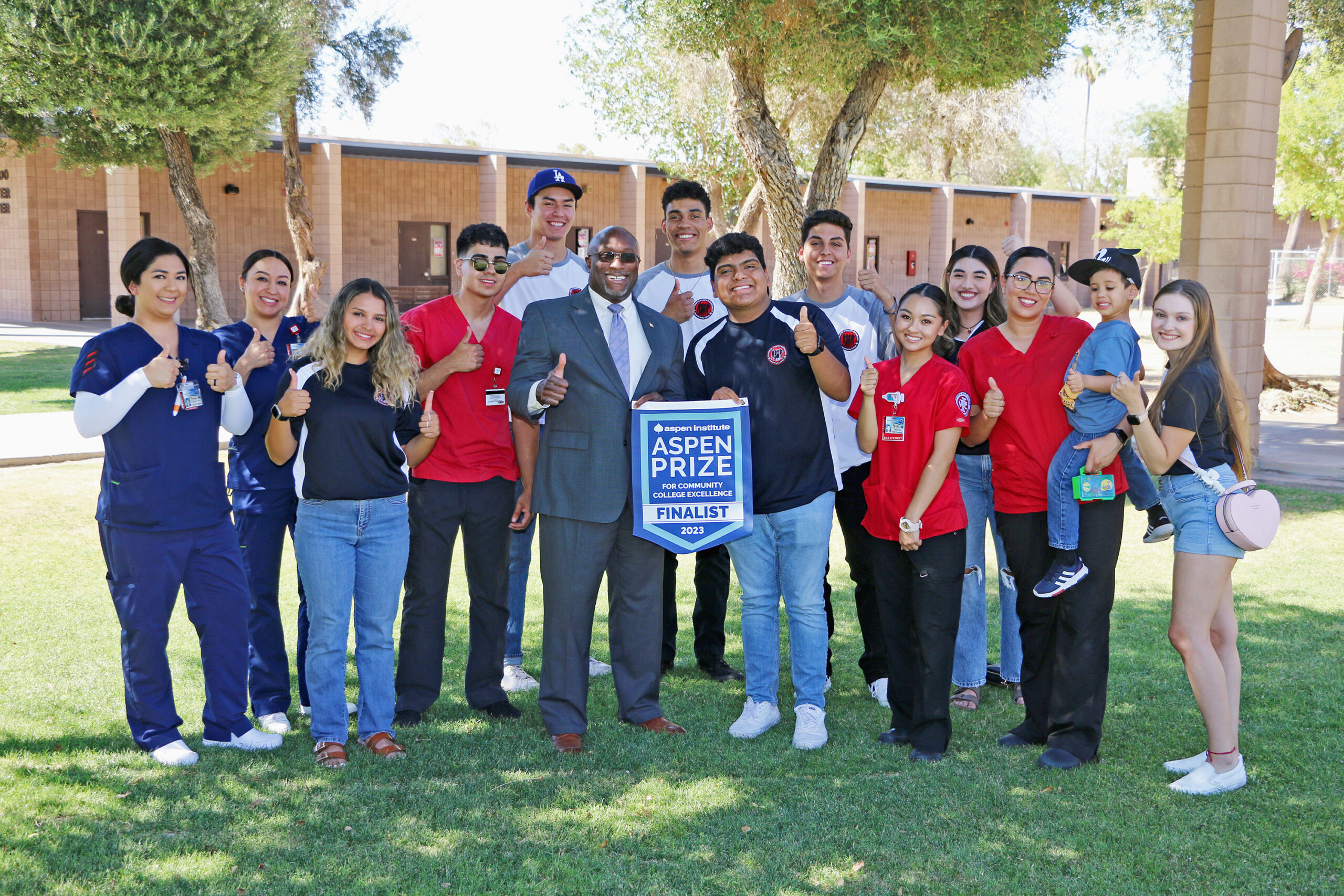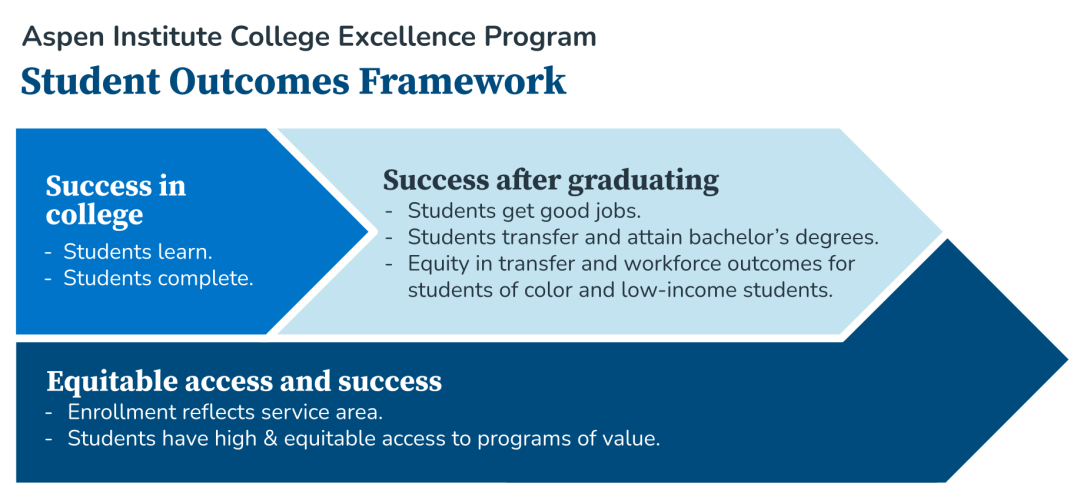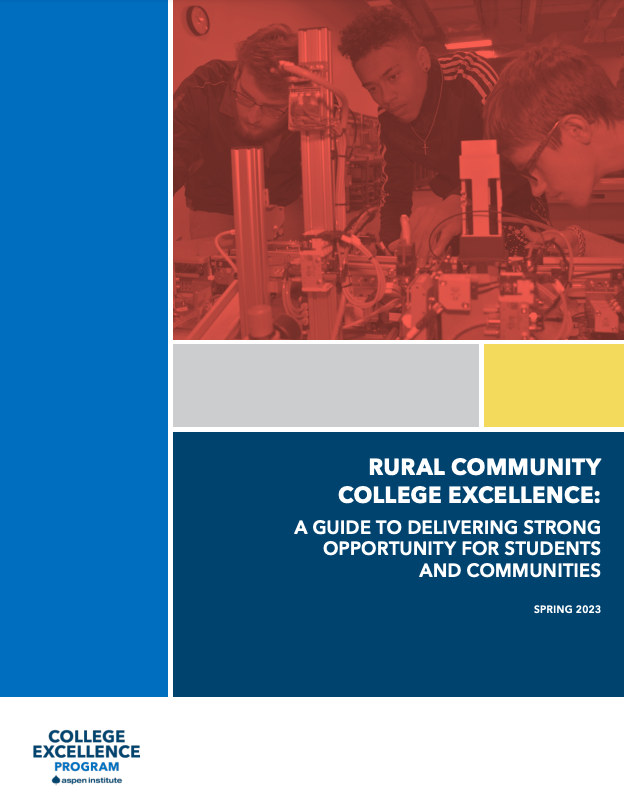
Aspen Prize Exemplars: Equitable Access and Success
Blog Post
In order to be truly excellent, community colleges must achieve strong and improving outcomes for all students, no matter their race, ethnicity, age, or socioeconomic background. All students should have access to high-value, high-demand programs of study—and the support needed to succeed in those programs.
Equitable access and success is a key component of how we at the Aspen Institute evaluate how well colleges are serving their students and communities. We look to see if colleges’ enrollments reflect the demographics of their service area, and if there is equitable access across student groups to colleges’ highest-value programs. Equitable access and success, student success while in college, and student success after graduation —all three elements are necessary to make an excellent college.
As we reflect on what we learned in the 2023 Aspen Prize process, we want to highlight how the ten finalists exemplify these three components, in the hopes that other colleges can draw inspiration and ideas from them. Today: equitable access and success.

The best community colleges use data to see which populations in their area are being underserved, and look for ways to meet the specific needs and challenges of those groups. When the demographic makeup of their region shifts, leaders of excellent community colleges proactively adjust their recruitment and enrollment models to reach and serve new populations.
Imperial Valley College (President Lennor Johson pictured above with IVC students), one of two Aspen Prize winners, recognized several years ago that the traditional approach to setting course schedules, which began with faculty preferences, was shutting out working adults. Too many students were having trouble finding courses at times that fit with their other responsibilities. In response, the college pivoted to a student-centered model with many more evening and weekend courses. Imperial Valley also redesigned short-term programs to offer part-time options for working students. For example, the state-designed Fire Academy program typically requires students to attend classes full time, Monday through Friday, 9 am to 5 pm, for four months. Because many Imperial Valley students work, college leaders lobbied the state for the flexibility to offer the academy over the course of a year. Now students can attend evening courses two days a week and on Saturdays. Changes like these have contributed to increased enrollment and faster progress to degrees.
At Amarillo College, the other winner of the Aspen Prize, leaders realized improved success rates in credit programs didn’t translate into better outcomes for many of the working adult students who entered the college in Adult Basic Education (ABE). So they made two changes: one, they gave ABE students full access to campus resources and services. Two, they better aligned the college’s credit programs and non-credit offerings, including ABE. With these shifts, adult students get the support they need to advance quickly and successfully to for-credit courses and employment. About 18 percent of students enrolled in non-credit ABE at Amarillo transition to for-credit courses, far greater than most colleges’ conversion rates.

Broward College created a bold partnership to bring college to the ZIP codes in the service area with the highest rates of unemployment and lowest rates of education attainment. Through Broward UP (Unlimited Potential) the college partners with municipalities and nonprofits to use public libraries and community centers for educational programming. Broward starts with free courses and wraparound supports to help individuals get their footing in higher education and see themselves as college-bound learners. Since 2018, over 3,500 new students have enrolled, and the program has produced 2,000 new industry certifications and certificates of completion. (Read more about BrowardUP on page 7 of our Community College Guide to Excellence & Equity in STEM Programs.)

Another way to increase equitable access: outreach to high school students. Northwest Iowa Community College hosts on-campus events for juniors and seniors called “Thunder Fridays,” which include a campus tour and meetings with faculty, advisors, and students. The college has now added “Latino Thunder Fridays,” a Spanish-language version tailored to the region’s fast-growing Hispanic population. More than half of high schoolers who participate subsequently enroll at Northwest Iowa; that number is even higher for students who attend Latino Thunder Fridays. (Read more about this practice on pages 18 - 19 of our guide Rural Community College Excellence.)
San Jacinto College has focused recruitment and advising efforts on two large feeder schools with very high numbers of students of color. Now almost a quarter of all enrollments at San Jacinto are dual enrolled high school students. Dual enrollment, when built with equity in mind, can be a powerful tool for generating momentum toward a credential. (Read more in The Dual Enrollment Playbook.) San Jacinto has also launched a Promise program covering tuition for recent high school graduates in its area.
In these ways, these high-achieving colleges are working to make sure all students have access to higher education, tailoring their outreach and their support to reach all students in their service areas. By focusing on equitable access and success, these colleges are delivering on the promise and value of higher education for their communities.
